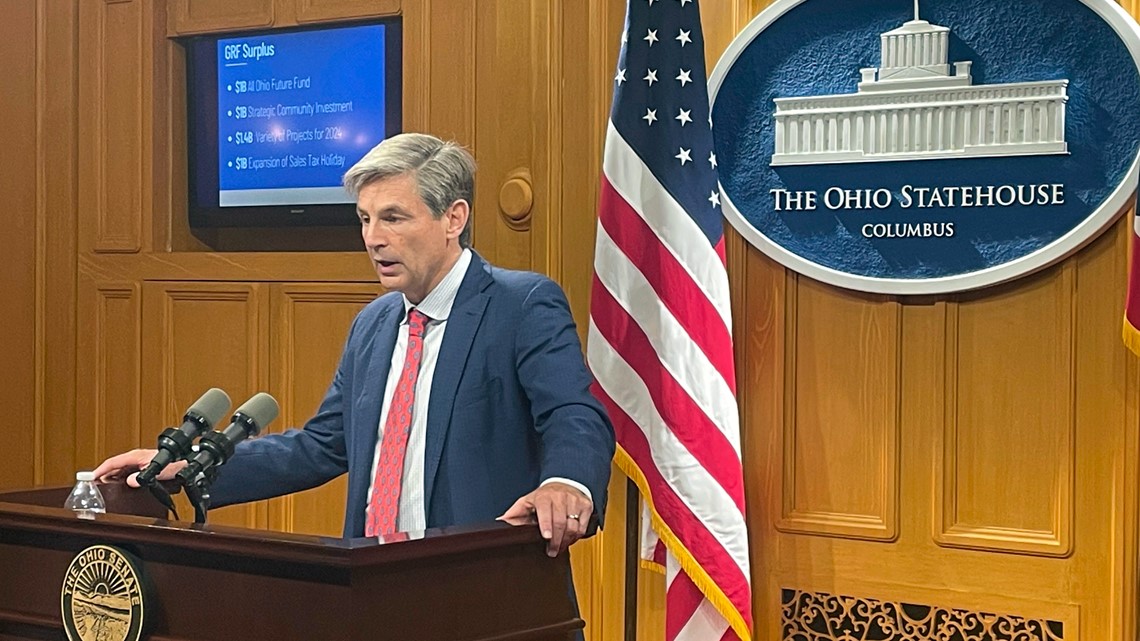COLUMBUS, Ohio — The Ohio Senate approved a two-year operating budget Thursday, teeing up negotiations with the House to settle differences. They'll have plenty to talk about.
As the budget picks up amendments, legislative researchers prepare reports comparing the differences. The latest version, only covering the disagreements, runs 650 pages.
One area where lawmakers will have their work cut out for themselves is public assistance funding. For the Supplemental Nutrition Assistance Program, or SNAP, and Temporary Assistance for Needy Families, or TANF, Senate drafters imposed significant new restrictions or sharply curtailed funding.
SNAP changes
SNAP, the program formerly known as food stamps, helps low-income people afford food. The federal government covers the benefit funding, but states pitch in on some of the program’s administrative costs. The Senate budget makes several changes when it comes to how the program runs.
The most tangible change would be to require photo identification on SNAP benefit cards. Lisa Hamler-Fugitt, who heads up the Ohio Association of Foodbanks, noted estimates from previous legislation suggested the change would cost $15 million in the first year of implementation. Cards would also include a number to report suspected fraud.
The Senate's budget also prohibits state agencies from seeking waiver for SNAP work requirements. In recent years, single adults between 18 and 49 with no children at home and no disability faced sharp restrictions on food aid. If they were not working or in a training program at least 20 hours a week, they could only claim SNAP benefits for three months in three years. But under the recent debt ceiling agreement, those work requirements will soon apply to adults as old as 54.
Greg Lawson from the conservative-leaning Buckeye Institute praised the changes, which he argued would make recipients "more accountable and ultimately more self-sufficient."
TANF policy
TANF dollars fund direct cash assistance, but they also support numerous other programs. The Senate’s most notable step was limiting most of those appropriations to a single year, rather than funding program through the end of the 2025 fiscal year. Sen. Matt Dolan (R-Chagrin Falls) warned of an impending funding cliff, but said they left childcare and foodbanks whole.


Hamler-Fugitt wasn't impressed with the Senate’s changes on TANF either. She said the budget "represents a cut in funding for emergency food programs over the next two years, and a drastic, permanent decline in revenue to support basic health and human services most Ohioans rely on."
The association had asked lawmakers for $50 million a year. The Governor proposed at least $24.5 million and the House upped that to $39.55 million. The Senate's changes dropped that figure to no more than $24.5 million.
In all, Ohio's TANF block grant amounts to about $1 billion. The governor's proposal doled out appropriations to household names like Big Brothers Big Sisters and YWCAs, as well as state networks like the Governor's Office of Faith-based and Community Initiatives. House members then tacked on earmarks for initiatives like mental health, afterschool, perinatal support programs.
The Senate axed funding for the United Way of Cincinnati and Bethany House Services while adding a few programs of its own, including a few community schools. But in line after line, the comparison notes the Senate "earmarks this amount in FY 2024 only instead of in both fiscal years."
2025 funding fall off
The Senate's budget zeroes out numerous TANF programs in the 2025 fiscal year that the governor or the House would have funded in both budget years. Here's how much funding different programs could lose under the Senate proposal:
- Governor's office of Faith-based and Community Initiatives: up to $13.5 million
- Independent Living Initiative: up to $2 million
- Big Brothers Big Sisters of Central Ohio: $1 million
- Ohio Council of YWCAs: $750,000
- Marriage Works! Ohio in Dayton: $200,000
- The Waterford Institute: $2 million (Senate cut 2024 funding from $1.5m to $1m and eliminated 2025 funding)
- Child Focus, Inc.: $500,000
- Ohio YMCA day camps and before/after school: $400,000
- Shoes and Clothes for Kids: $300,000
- Open Doors Academy: $3.3 million (Senate cut 2024 funding from $2.8m to $2.3 and eliminated 2025 funding)
- Foundry Row, Sail, Dream Program: $600,000 (Senate also cut 2024 funding from $375k to $250k)
- Birthing Beautiful Communities in Cleveland: $1.9 million (Senate cut 2024 funding from $1.2 to 500k and eliminated 2025 funding)
- Inspireducation: $500,000 (Senate cut 2024 funding from $300,000 to $100,000 and eliminated 2025 funding)
- Somali Community Link: $1 million
- My Project USA: $200,000
The Senate also appropriated TANF funding for the following programs — but only for the 2024 fiscal year:
- University Circle, Inc.: $150,000
- Mahoning Valley Community School: $500,000
- YWCA of Greater Cleveland early learning: $200,000
- African American Male Wellness Agency: $300,000
- Neighbors Helping Neighbors: $350,000
- Hilliard Community Assistance Council: $75,000
- HEART Food Pantry, Inc.: $125,000
- Survivor Advocacy Outreach Program: $250,000
- Best Buddies Ohio: $250,000
- University Settlement: $110,000
- Communities in Schools of Ohio: $250,000
The Senate’s proposal isn’t the final word. In the coming weeks, budget negotiators from both legislative chambers will meet to hash out the differences. They have until June 30 to pass a budget.
Read more from the Ohio Capital Journal

